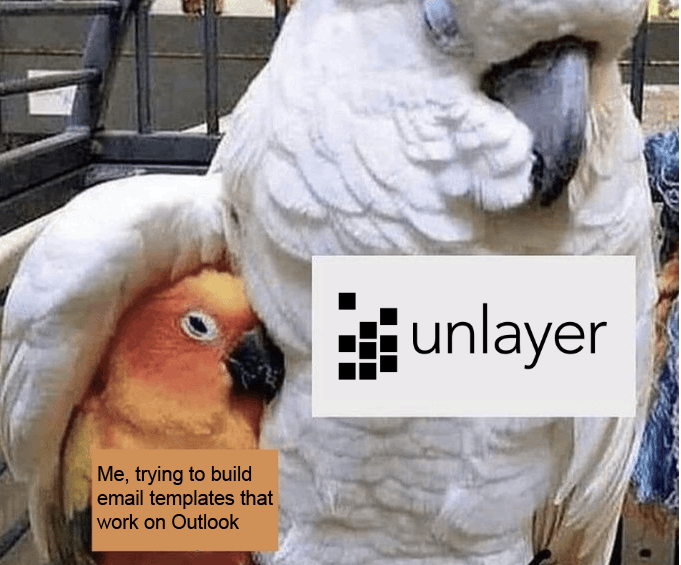Ten predictions for 2022

Happy New Year!
As one does this time of year, we’ve taken a step back to re-evaluate what we really want out of life. Turns out, we want to be famous. Specifically, Youtube famous. Unfortunately, we’re not good at Boxing, Minecraft, or giving away money - so programming videos will have to do.
Check out our first video that I spent way too much time on.
If you enjoy it, be sure to LIKE AND SUBSCRIBE AND RING THE BELL and you’ll get at least 2 more videos before we fizzle out and give up on our 2022 resolution before February hits.
For our first issue of the year, we’ve got ten predictions for 2022 that are all guaranteed to come true. We don’t make the rules. Welcome to #81.

The takes are heating up
2022 Predictions Part 1 — Hot Takes 🔥
Some people celebrate New Year’s Week by removing all of the jackets hanging on their Peloton. We spent ours reflecting on some of humankind’s greatest moments and making predictions about the wide world of web dev in 2022.
We’ve got 10 predictions for you (one for each month of the year, obviously), and the spicier takes are in Part 2. Let’s get into it.
-
Next.js will become less of a React meta-framework and more of a *web* meta-framework. Vercel has already hired Rich Harris (AKA Lord of the Svelte) and shared their plans for an edge-first approach to building for the web with any framework. They’ll lean into this even more in 2022, cozy up to more JS frameworks/libs (with pillowcases full of cash), and gear up for an IPO.
-
Serverless will help front-end developers become (real) full-stack developers — and (hopefully) get paid accordingly. Lots of Serverless technology is built on top of V8 and is embracing Web APIs, so front-end developers will already be familiar with key parts of Serverless infrastructure. Now instead of spinning up an Express server and calling yourself a “full-stack developer”, Serverless will enable you to actually be one.
-
React 18 will… *launch* 🥲.
-
RIP Babel and Webpack. They won’t be gone forever, but they’ll be largely replaced by newer build tools that are faster and more intuitive — like SWC, esbuild, and Vite. Now I just need to figure out what to do with this “open in case you have to read the webpack documentation” alcohol stash I have…
-
No/Low-code tools will dominate even more. You’ll probably continue ignoring them — meanwhile even more agencies and teenagers will make millions of dollars shipping sites without writing a line of code. In 2022, we’ll also start to see more established software companies with “real developers” leveraging no/low-code tools because the best code is the code you don’t have to maintain.

Safety from the storm [sponsored]
Unlayer’s Embed Plugin is a lifesaver
Trust me on this one – building responsive email templates that actually work on every email client is a pain that I wouldn’t wish on any of you (unless you’re reading this email on Outlook right now).
But thanks to Unlayer’s new Embed Plugin, no one has to feel that pain ever again 🙏.
Unlayer is a simple JavaScript SDK that lets you add a white label, drag-and-drop editor to your SaaS app in 5 minutes, instead of spending hundreds of hours building it yourself. They’ve even got specific components for React, Angular, and Vue so you can seamlessly integrate it with the rest of your app.
Check out Unlayer’s free trial, and make it easier than ever for your SaaS customers to create high-quality, fully-responsive email templates and landing pages that work on every email client and every browser.

Some dance to remember, some dance to forget
Predictions Part 2 — Hotter Takes 🔥🔥
-
Meta will give up control of React. Similar to when they created the GraphQL Foundation in 2018, Meta will create a React Foundation later this year and give up control of React. Unlike Microsoft/Amazon/Google – Meta has never (successfully) monetized developers, so React isn’t a strategic priority for the business. That could be even more true now, with Zuck’s eyes on the ✨Metaverse✨ and Sebastian Markbåge leaving for Vercel.
-
VC will solve OSS funding At least, it’ll feel like that. With a few pre-revenue/traction/pmf OSS projects raising seed rounds at valuations between $25-50MM, it’ll have you wanting to dust off that old side project of yours. I don’t know if it’s sustainable (it’s not), but it’s much better than that time we relied on Patreon for funding our critical web infrastructure.
-
Speaking of VC funding OSS, one of those OSS projects who raised a seed round at a valuation between $25-50MM will burn all that money (mission accomplished?) as it struggles to gain traction/revenue before shutting down.
-
Netlify will acquire Remix. “Bottoms up” framework is the wave. Netlify will want the distribution and Remix will want the…money. It would let the Remix team spend their time on what they’re good at, Remix-the-framework, rather than Remix-the-business. The pairing would give them both a much better shot at catching up with Vercel/Next.js.
-
Web3 will take over everything. NFTs and DeFi will upend all traditional art, finance, entertainment, and banking. Meanwhile, we’ll all move to Miami and replace our families and friends with a DAO we’ll form (join our Discord, btw). From there we’ll create cloud cities with our own form of government where we’ll only go by our pseudonymous identities and JPEGs will serve as drivers licenses. Finally, after all that, we might have the technology and freedom of mind to find a valid use case for Web3.
Cool Bits
-
Did I mention we have a Youtube channel? Check out our newest video, Imperative vs Declarative Programming.
-
@101arrowz is already taking their pseudonymity very seriously, and they wrote this cool, four-part tutorial about how they built a mobile document scanner with zero dependencies.
-
Craig wrote about if it’s time (get it?) for the JavaScript Temporal API — a Stage 3 ES proposal. I’m not sure, but this mildly-upsetting puppet musical number did teach me that time is just a construct of human perception.
-
Oliver recreated Prince of Persia in JavaScript — the game, not the 2010 movie with casually cruel Jake Gylenhaal. Here’s the source code.
-
Vitest is a unit-test framework and Jest alternative that’s powered by Vite. The existence of “Vitest” and “Vite” implies the existence of a “Viter”, and I for one will not rest until I discover what that is.
-
Colton made some cool New Year’s Fireworks in code form, so you can relive that NYE magic all year long. Still waiting on Colton to recreate the infamous “I’m not seeing enough movement” moment from a few years ago.
-
Surma (from the Chrome Team) wrote about deep-copying in JavaScript using structuredClone. I’m pretty sure that “deep-copying” is also the scientific name for the flow state I would enter after a couple hours of plagiarizing my high school essays.
-
Michael made a good video explaining how to use D3.js to make a few different data visualizations. I’ve already used it to create a chart that shows how the more money you spend on exercise equipment, the more calories you burn. That’s why I bought myself a Peloton, a Tonal, that Mirror thing, a Bowflex, and a bunch of Tae-Bo VHS tapes I saw at a garage sale. I’m not one to argue with science.